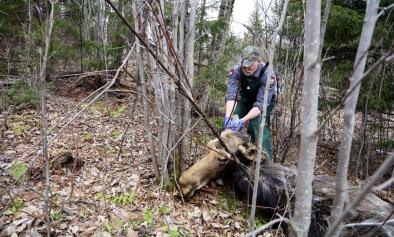Science Source
Viral emergence in marine mammals in the North Pacific may be linked to Arctic sea ice reduction
- States that climate change-driven alterations in Arctic environments can influence habitat availability, species distributions and interactions, and the breeding, foraging, and health of marine mammals
- States that phocine distemper virus (PDV), which has caused extensive mortality in Atlantic seals, was confirmed in sea otters in the North Pacific Ocean in 2004, raising the question of whether reductions in sea ice could increase contact between Arctic and sub-Arctic marine mammals and lead to viral transmission across the Arctic Ocean.
- Uses data on PDV exposure and infection and animal movement in sympatric seal, sea lion, and sea otter species sampled in the North Pacific Ocean from 2001–2016,
- Investigates the timing of PDV introduction, risk factors associated with PDV emergence, and patterns of transmission following introduction
- Identifies widespread exposure to and infection with PDV across the North Pacific Ocean beginning in 2003 with a second peak of PDV exposure and infection in 2009; viral transmission across sympatric marine mammal species; and association of PDV exposure and infection with reductions in Arctic sea ice extent
- Concludes that of PDV exposure and infection following 2003 may reflect additional viral introductions among the diverse marine mammals in the North Pacific Ocean linked to change in Arctic sea ice extent
Related Content
Science Source
| Global Change Biology
Decadal-scale phenology and seasonal climate drivers of migratory baleen whales in a rapidly warming marine ecosystem
Daniel E. Pendleton, Morgan W. Tingley, Laura C. Ganley et al
Headline

May 19, 2022 | Climate Nexus Hot News
Climate Change Great For Winter Ticks, Very Bad For Moose Calves
Science Source
Climate change increases cross-species viral transmission risk
Colin J. Carlson, Gregory F. Albery, Cory Merow et al
Science Source
| Journal of Animal Ecology
Climate change affects bird nesting phenology: Comparing contemporary field and historical museum nesting records
John M. Bates, Mason Fidino, Laurel Nowak-Boyd et al


